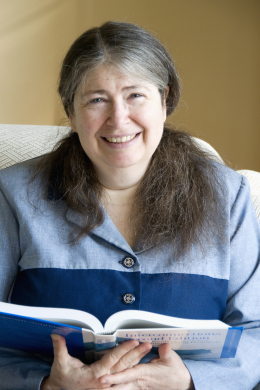Women in STEM: Five Inspirational Stories
Have you ever been negatively stereotyped for being a young woman in STEM? Unfortunately, you’re not the only one. The old stereotype of girls being bad at STEM is as alive as ever. A great way to put an end to this is to provide young women with role models who can motivate them to be persistent and succeed.
On this Business Women’s Day, we’re celebrating women in STEM who empower and motivate all girls and women who work (or dream about working) in STEM. We’re sharing the stories of five remarkable women who changed the world with their stories. We hope they’ll inspire you as they inspire us!
Rosalind Franklin

Image: Jenifer Glyn/Wikimedia Commons
Rosalind Franklin studied physics and chemistry and later earned a Ph.D. in physical chemistry, which enabled her to travel and teach around the world. While working at King’s College, Cambridge, she spent hours studying DNA structure with X-ray diffraction. It was she who took a photo of DNA and proved it was a double helix.
Sadly, her achievement wasn’t acknowledged at that time. You wonder why? There is some controversy indicating that Francis Crick and James Watson used Franklin’s findings as theirs in their own publications. It was quite some time until she emerged from the shadow of these two powerful men and her contribution was fully recognized.
Radia Perlman

Image: Wikipedia
We couldn’t imagine the world today without the internet, right? Well, if it weren’t for Radia Perlman, we might not have had it. The Mother of the Internet, as she’s called, developed the algorithm behind the Spanning Tree Protocol (STP), which is fundamental to the operation of network bridges. She also invented TRILL (TRansparent Interconnection of Lots of Links) to correct the limitations of STP.
A wildly creative thinker, Dr. Perlman even developed a child-friendly programming language. She authored a textbook on networking and network security and holds more than 100 issued patents.
Mae C. Jemison

Image: NASA
As a little girl, Mae Jemison loved science and stargazing and dreamed of going into space. That dream came true on September 12, 1992. She became the first African-American woman to travel in space when she went into orbit aboard the Space Shuttle Endeavour. There she conducted experiments on motion sickness, weightlessness, and bone cells.
As if that weren’t enough, Jemison is a dancer and holds nine honorary doctorates in science, engineering, letters, and the humanities. In 1993, she resigned from NASA and began her teaching career. Today, she is founder and president of two technology companies and focuses on improving healthcare in Africa and advancing technology in developing countries. Is there anything Mae can’t do? She’s truly inspiring!
Margaret Hamilton

Image: Draper Laboratory
Talking about space, we mustn’t forget Margaret Hamilton, whose software sent Apollo 11 to the moon. Also, when errors occurred, the software she created managed to save the lives of the Apollo 11 astronauts – Neil Armstrong, Buzz Aldrin, and Michael Collins. Besides that, she was one of the first computer software programmers. She also coined the term software engineer.
Hamilton was a director of the Software Engineering Division of the MIT Instrumentation Laboratory, and later became the founder and CEO of Hamilton Technologies, Inc. Hamilton was the recipient of various honors, including NASA’s Exceptional Space Act Award (2003). You’ve probably already seen the picture of her alongside Katie Bouman, when Katie took a picture of the black hole this year.
Cynthia Breazeal

Image: Jibo
After seeing “Star Wars” for the first time as a young girl, Cynthia Breazeal began to dream of building personal robots. Guess what? She did it! Breazeal is a pioneer in Social Robotics and Human Robot Interaction.
She’s developed some of the world’s most famous robotic creatures – ranging from small hexapod robots to embedding robotic technologies into familiar everyday artifacts, and creating highly expressive humanoid robots and robot characters. Jibo, Kismet, and Leonardo are only some of the famous social robots she’s made.
And, one more thing…
Finally, we have one piece of advice for you or every young woman with dreams and goals seemingly out of reach. Never underestimate yourself! Arianne Hunter, a woman in STEM, explained her early self-doubts:
If I would’ve told myself five years ago that I would have the number of publications, awards, and honors… I would have probably laughed hysterically. I would’ve thought it was impossible for a black female scientist to do those things.
And yet, today she holds a doctorate in Organic Chemistry/Molecular Pharmacology, is the founder of the nonprofit, “We Do Science, Too,” and has been recognized and awarded for her advocacy work for women and minorities in STEM.
CHOOSE A PROJECT AND CREATE YOUR OWN STEM STORY!

